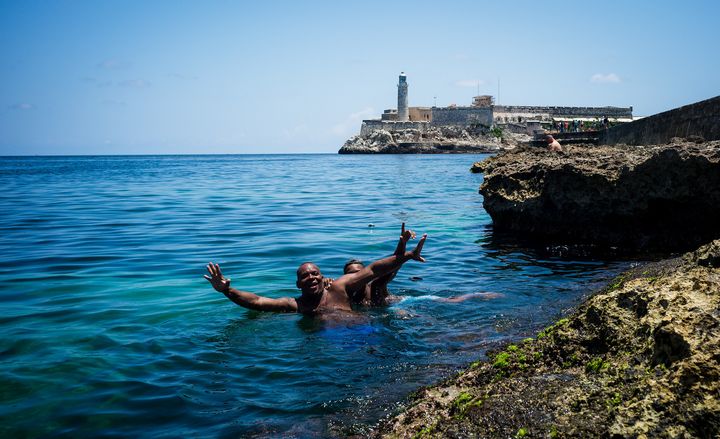
A week in Havana is not enough time to experience more than a slice of what life is like in the city of 2.1 million, much less the 760-mile long island. Perhaps, the best you can hope for is being able to make a connection with the people you meet ― breaking down preconceived notions you may have about them and they, of you.
For first time visitors from the U.S., it can be a little overwhelming to take it all in in such a short period.
You risk sensory overload: Crumbling and decaying buildings at every turn, a sense of hope and frustration among the people you meet, the surreal sight of classic American cars everywhere, evidence of emerging, if not thriving, capitalism, and a pent-up creative awakening finding an outlet in the island’s food, music, dance and arts.
Seven of us traveled to Havana from Washington, D.C. in June for Focused Photo Adventure’s inaugural Cuba workshop. The members of our group were a mix of professional and amateur photographers, who all, except for me, were making their first trip to Cuba.
The experience was filled with profound moments; some of which we even captured with our cameras.
Below are images from the trip that have special meaning to the photographers who took them. The images will appear in our upcoming photo book, Cuba: Seven in 10.

“Traveling around Havana, I was continually struck by the effects of entropy. Once vivid colors faded, beautiful ornaments on buildings cracked, intricate mosaics missing tiles. Yet, here and there, I’d see a spark of vitality holding itself together under the dust of decades of neglect.
This photo was taken in the entrance of a neighborhood boxing gym. The boxing ring and training area are in an open-air courtyard. On the day we were there, it was approaching 100 degrees in the sun.
The boxers training there were young men whose age would make them “millennials” in the U.S. There was no water available, yet they made due and and pushed through. I asked one (who had an apple logo shaved into his buzz cut) what he was training for, thinking maybe there was a tournament or event. He said ‘We train — there’s nothing else to do.’
I felt as though everywhere I went people were waiting for something. Not anything specific… just something.” ~ Charles Butler
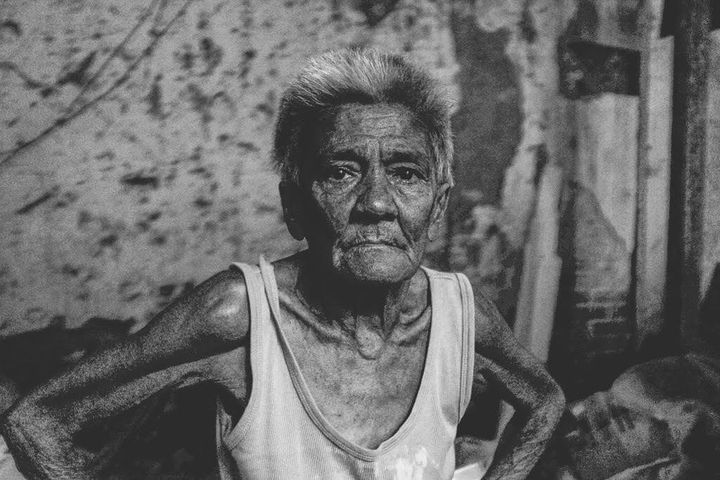
“This is Marta Rodriguez. I met her on a walk through Central Havana with a couple of my fellow photographers. She lived in a makeshift shack that she constructed in what used to be her former place of employment — a state-owned parking lot.
By the time I met Marta, I was generally fatigued by folks on the streets asking for money in exchange for photographs, usually angled with the question: “Where are you from?”
Marta had no expectations — all she wanted was to show her real living conditions to three men with cameras.
She perhaps sensed, quite presciently that we may be able to share her story– a story showing that she mattered.
She existed.
Even if she was disappointed by the system that promised her full social and financial equality.
I write this as I am reading Wolfgang Streeck’s ‘Buying Time,’ and with the backdrop of the recent Brexit vote that is bound to change the global economy, even Cuba’s.” ~ Nana Gyesie
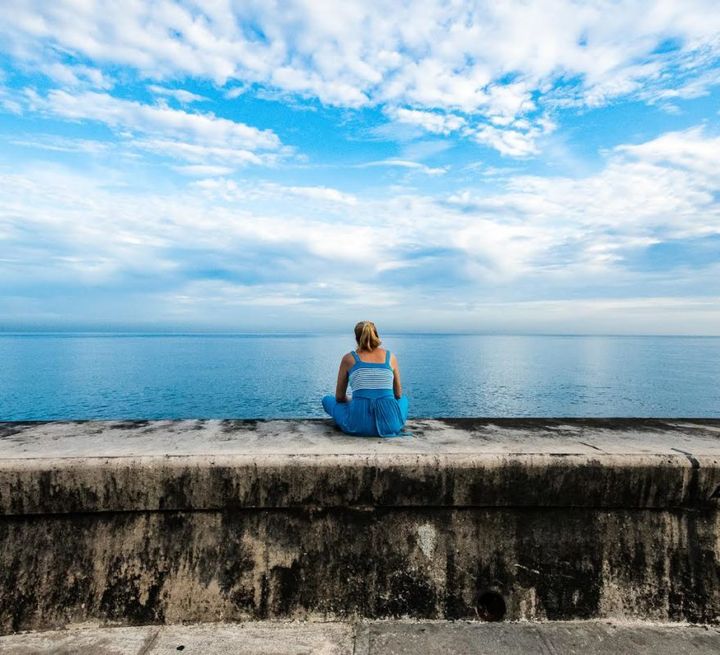
“I came across this woman sitting alone on the Malecón seawall. She was pensive, taking in the beautiful sound and sight of the sea.
I thought about asking her if I could take a portrait of her but decided to capture her as is. She fit into the scenery nicely, as well as into my idealized impressions of the state of affairs between the U.S. and Cuba.
It’s known that the U.S. embargo has severely impacted the lives of the Cuban people, but from what I learned while there, they remain strong, hopeful and resilient. Yet, they are also cautiously optimistic of their future should the major components of their economy change, including the U.S. embargo.
This visual resonated with my hope that if Cuba embraces capitalism, to a large degree, the soul of the people will remain unspoiled.
I hope that as the Malecón seawall protects Havana from turbulent seas, the strength of the Cuban soul will protect the people from the crush of an impending capitalist storm.” ~ Dwight Jefferson
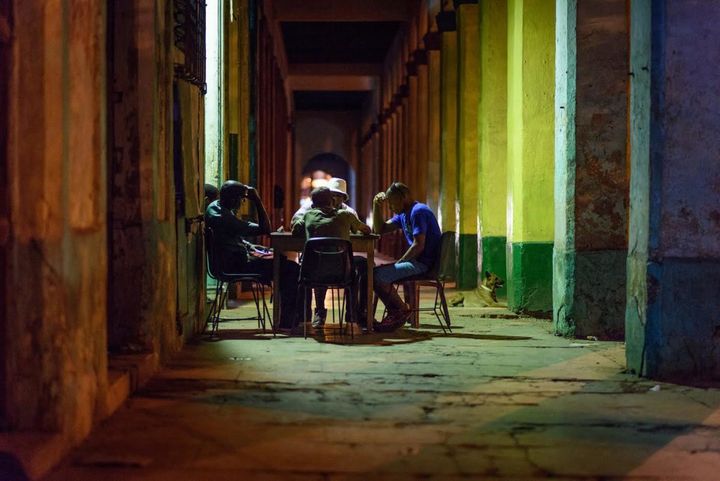
“This shot epitomizes all that is good with Cuba and all that troubles it. The people have a great warm spirit to them and the architecture and colors are beautiful.
At the same time, the passage is poorly lit with the exception of the area where the table is, and you can see corrosion, a result of neglect in the post-Soviet era. The warmth overpowers the negatives here, and that is my sense of Cuba.
Hard times may be upon the people, but they will persevere and thrive.” ~ Geoff Livingston

“This is Guillermo in the tenement apartment he shares in Central Havana. There are more than 100 people crammed into the 15 units in his building.
While there are signs of emerging wealth in Havana, the vast majority of the city’s residents live in what Americans would consider substandard housing. We were told an average of three buildings a day are collapsing in Havana.
Guillermo is now retired after spending years working as a baker, textiles worker and mosquito control employee. He was seven when Fidel and Che made their triumphant march into Havana. He remembers very little about the revolution and what life was like before communism.
When I asked him if, given the chance, would he move to the U.S. (where a daughter lives), he replied, ‘The U.S.A. is no country for old men.’ ” ~ Joe Newman

“One of the things I learned in Cuba, is that for Cubans, the ocean means a different thing than for most of us; it means that there is something beyond, there is hope. This is Raul, he was sitting on the wall of Havana’s Malecón.” ~ Pablo Benavente, aka Pablo Raw.
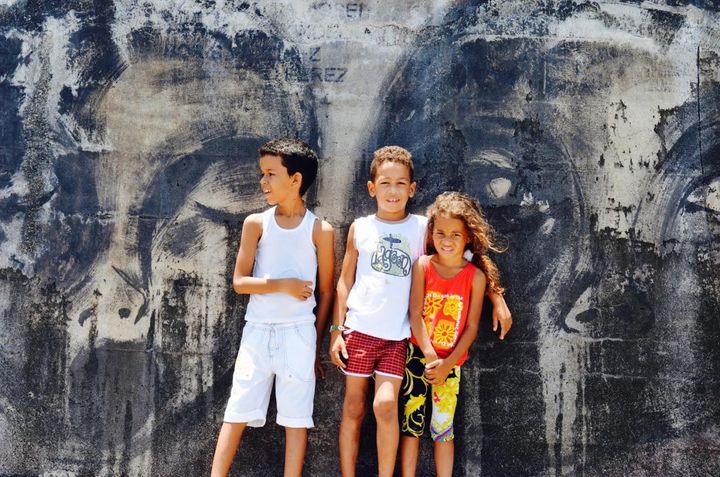
“Cuba’s future is with its youth. Thanks to Cuba’s literacy campaigns, most children are uniformly well-educated across urban and rural, economically poor and more well-to-do areas.
With an aging leadership and population, these youth are the ones who will help navigate and ride the waves of changes coming.
I enjoyed talking with these three very bright kids who were happily exploring and playing against the background of street art etched along the sea-facing Malecón wall.
Being an old man, I’ve suddenly forgotten their names and lost the paper where I had written their address but will give them this picture when I find it.” ~ Jon Sperling
Joe Newman runs Focused Photo Adventures, which helps photographers arrange people-to-people experiences in Cuba, as well excursions to other locations.
